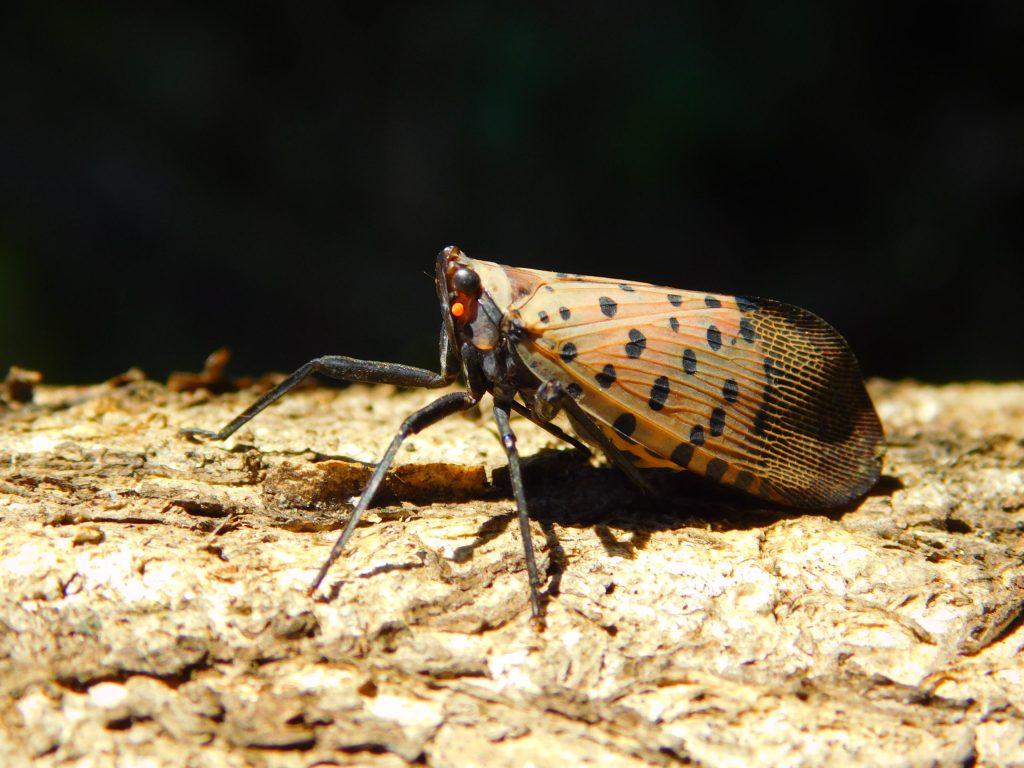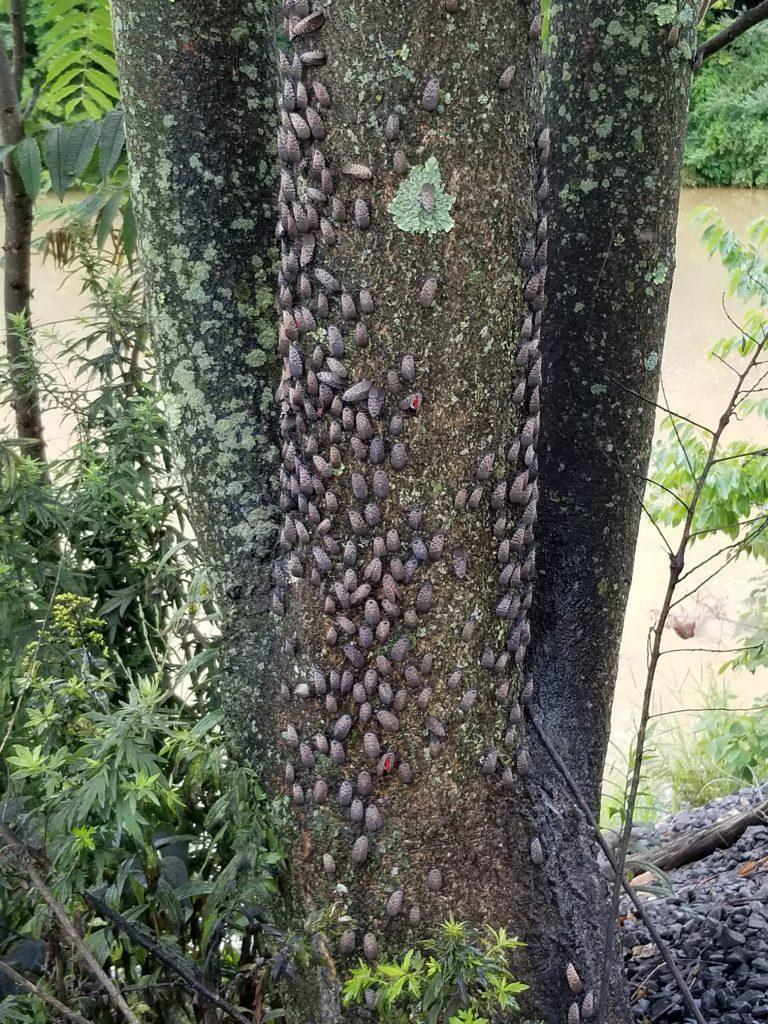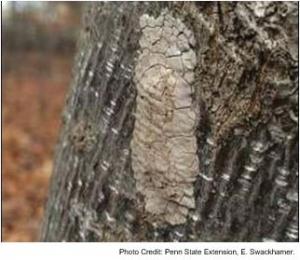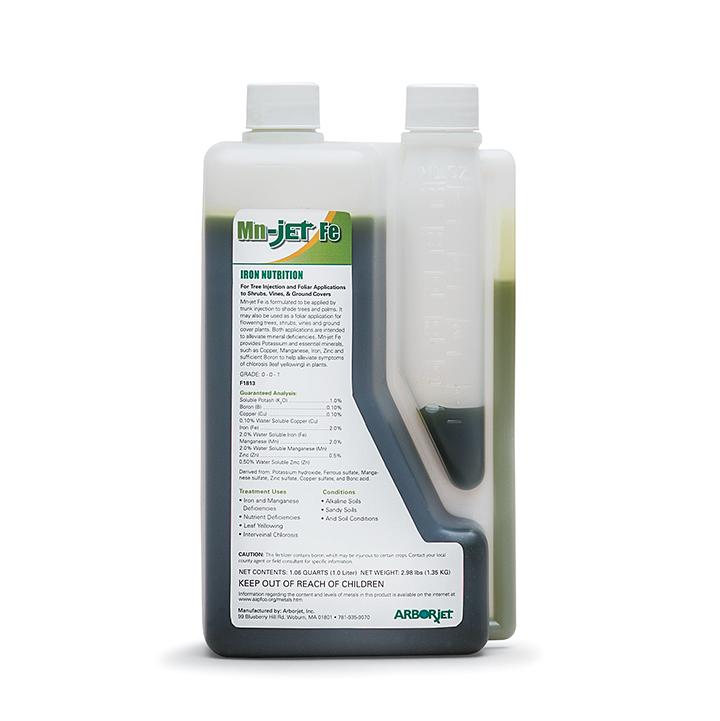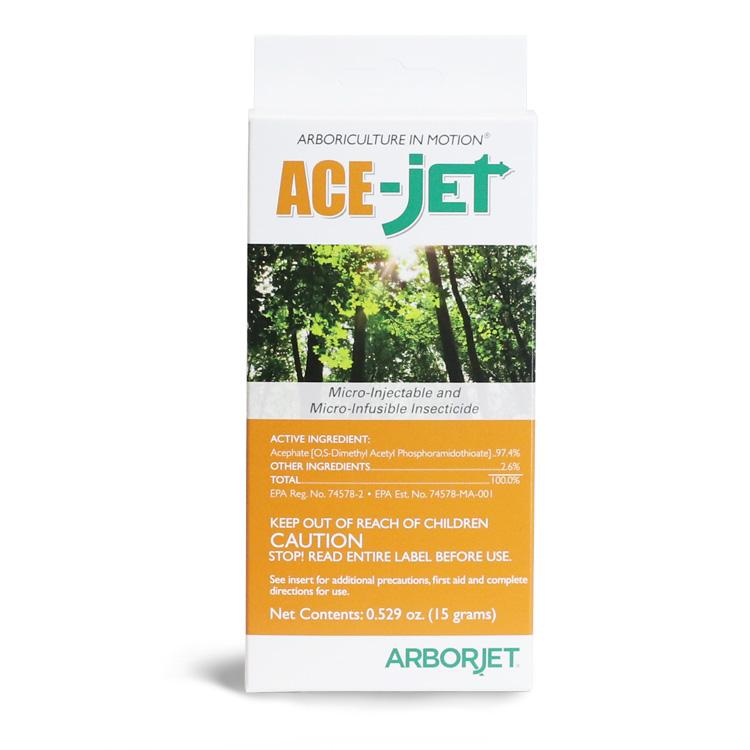Spotted Lanternfly
Spotted Lanternfly (SLF, Lycorma delicatula) is an invasive pest native to Southeast Asia. It was first discovered in Pennsylvania in 2014 and has since spread to 17 other states (Connecticut, Delaware, Georgia, Illinois, Indiana, Kentucky, Maryland, Massachusetts, Michigan, New Jersey, New York, North Carolina, Ohio, Rhode Island, Tennessee, Virginia, and West Virginia..
While SLF nymphs and adults prefer to feed on Tree of Heaven (Ailanthus altissima), they will also feed on a wide range of species, including maples, grape vines, and fruit trees. Capable of traveling only short distances on its own, people moving egg mass-infested materials (firewood, lawn furniture, trailers, etc.) have aided its rapid spread.
Adult Spotted Lanternflies are approximately 1 inch long and half an inch wide, with large and visually striking wings. Their forewings are light brown with black spots at the front and a speckled band at the rear. Their hind wings are scarlet with black spots at the front and white and black bars at the rear. Their abdomen is yellow with black bars. Nymphs, in their early stages of development, appear black with white spots and turn to a red phase before becoming adults. Egg masses are yellowish-brown in color, covered with a gray, waxy coating prior to hatching.
IMA-jet 2(ee) for PA, MD, DE, NJ, VA
IMA-jet 10 2(ee) for PA, MD, DE, NJ, VA
ACE-jet 2(ee) Label for CT, DE, MA, MD, ME, NH, NJ, OH, PA, RI, VA, VT
Common Symptoms
Both nymphs and adults of spotted lanternfly cause damage when they feed, sucking sap from stems and leaves. They produce copious amounts of honeydew, which supports growth of sooty mold. The feeding and mold can reduce photosynthesis, weaken the plant, and eventually contribute to the plant’s death. In addition, feeding can cause the plant to ooze or weep sap resulting in a fermented odor, that can attract other insects (wasps, ants and flies).
Treatments
A trunk injection of IMA-jet® using systemic injection equipment is recommended. To increase the resilience of the tree, we recommend a follow up application of NutriRoot® or Mn-jet Fe™. Mid-summer (July) treatments typically coincide with the arrival of 4th instar (red) nymphs and adults on host trees. SLF mortality occurs after ingestion, generally within a few days of treatment application, and continues for a full season. Adults may continue to migrate to attractive treated trees into the fall, but feeding is limited and honeydew, sooty mold, egg ass-production will decline.
A trunk injection of ACE-jet™ will also provide broad systemic control and protect against spotted lanternfly and helps reduce honeydew and sooty mold growth. Apply ACE-jet in the fall (August/September) for late-season treatments.
References And Photo Credits
Main photo of Spotted lanternfly adult taken by Don Grosman, Arborjet Inc.
SLF adults congregating on Tree of Heaven, taken by Don Grosman, Arborjet Inc.
SLF egg mass taken b Emily Swackhamer, Penn State Extension
SLF late instar nymphs on Tree of Heaven taken by Don Grosman, Arborjet Inc.

